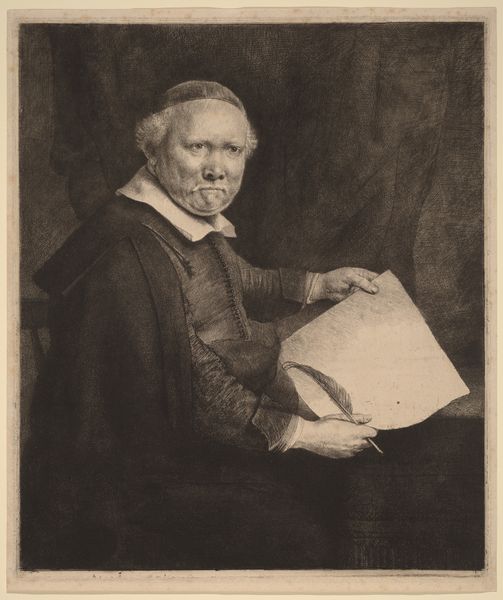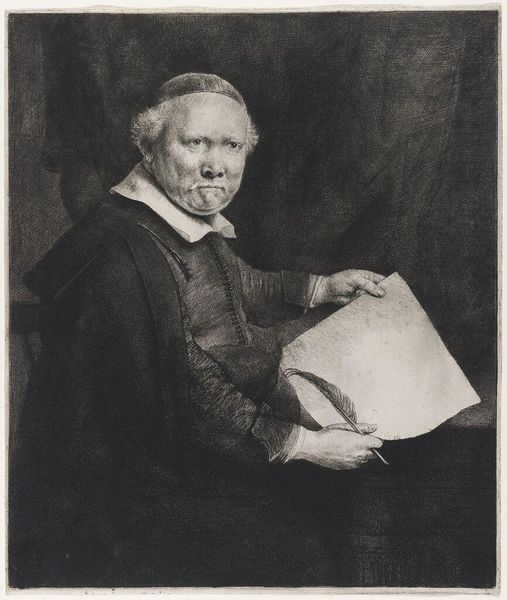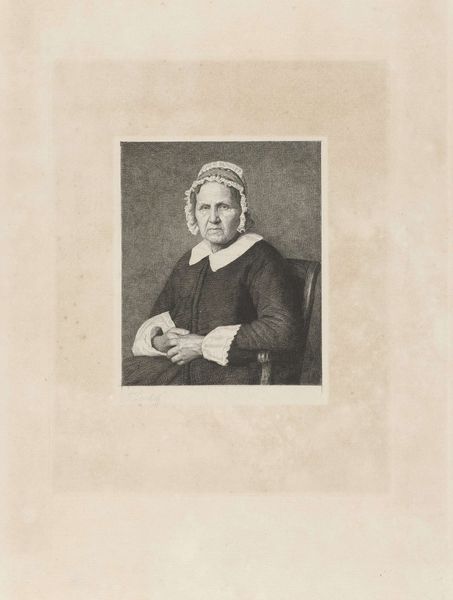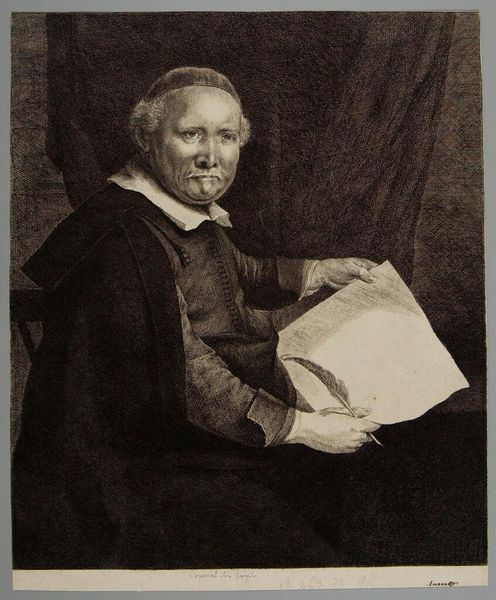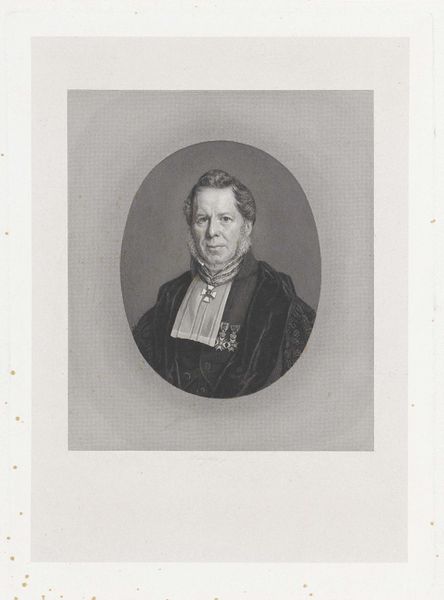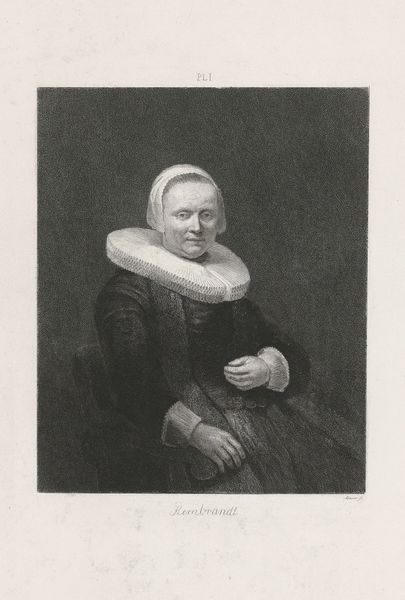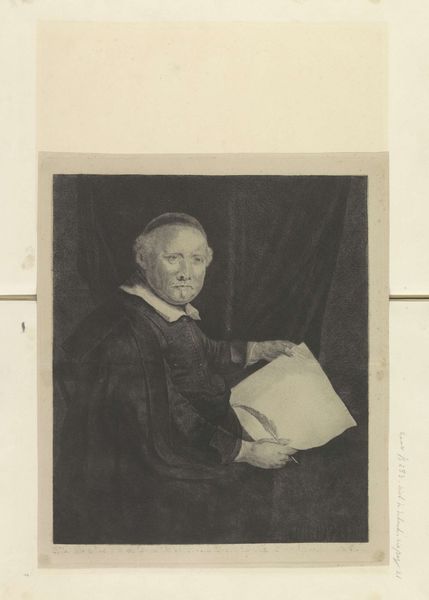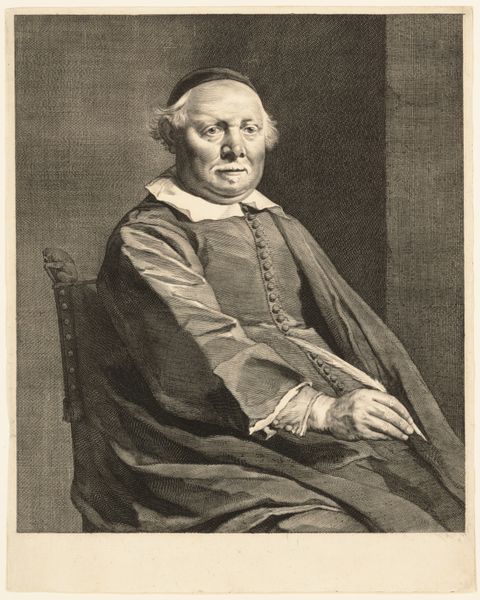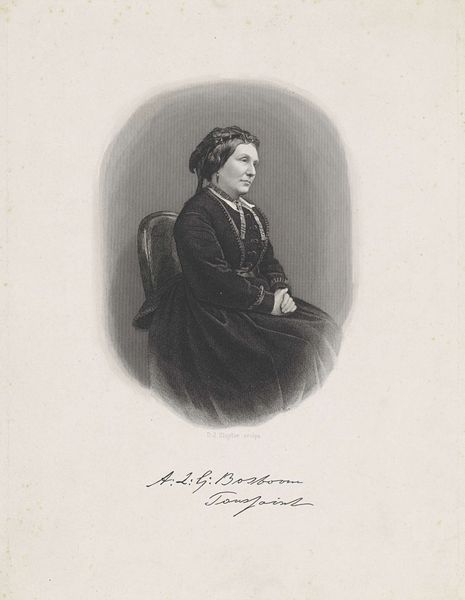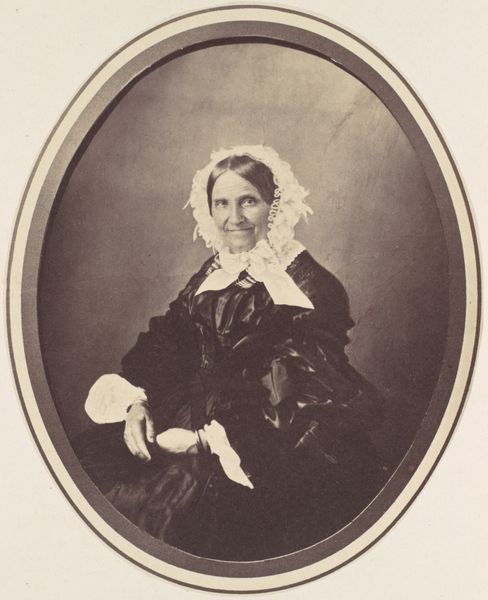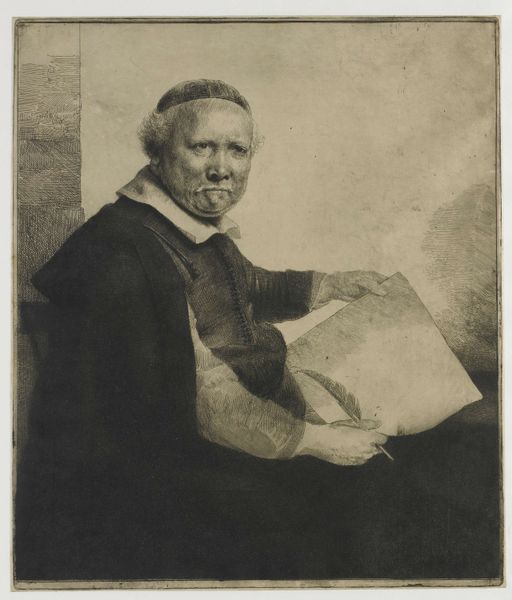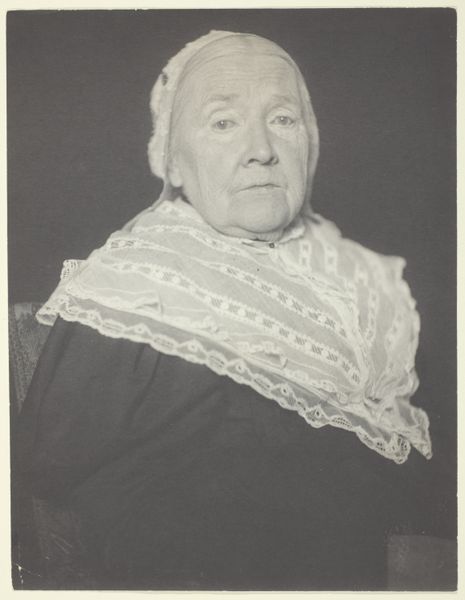
print, etching, engraving
#
portrait
#
baroque
# print
#
etching
#
portrait drawing
#
engraving
Dimensions: 33 x 28 cm
Copyright: Public domain
Editor: This is Rembrandt van Rijn's "Portrait of Coppenol," created in 1658. It's an etching and engraving, and what immediately strikes me is the incredible detail he achieves with such a limited palette. There’s a real intensity in the sitter’s gaze, a sort of weariness. What do you see in this piece, from your perspective? Curator: Beyond the individual portrait, consider how Rembrandt's etchings engaged a burgeoning print market. Prints democratized art, bringing images to a wider public. Coppenol, likely a writing master, is depicted with the tools of his trade – the pen and paper. What does this say about the representation of professions in art at that time? Editor: It suggests a rising status for these roles, doesn’t it? They’re worthy of artistic representation, aligning perhaps with the growing merchant class in Dutch society. But did Rembrandt typically flatter his sitters or aim for a more realistic portrayal? Curator: Rembrandt was interested in capturing the psychology of his subjects, offering insight into the human condition. Was this just a depiction of an individual, or could it be making some commentary about societal shift towards recognizing middle-class occupations, too? The etching captures a level of detail and realism that aligns with the era’s valuing of visual accuracy. How might this attention to detail impact our understanding of the individual depicted? Editor: Well, it feels honest. It gives a sense of direct access to the man's character, which might not have been something all could enjoy outside of a print like this. This feels different from more idealized representations of wealth and power in earlier portraiture. I’m beginning to see how revolutionary the simple act of portraiture could be within a specific social and cultural context! Curator: Precisely! These prints offered new ways of seeing and being seen. I think paying closer attention to those historical forces encourages the contemporary audiences to seek new meaning beyond aesthetics.
Comments
No comments
Be the first to comment and join the conversation on the ultimate creative platform.
